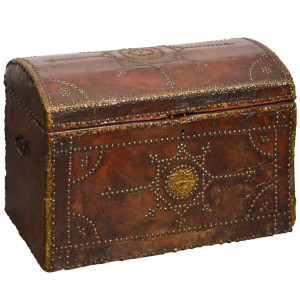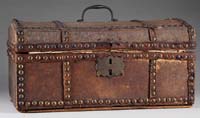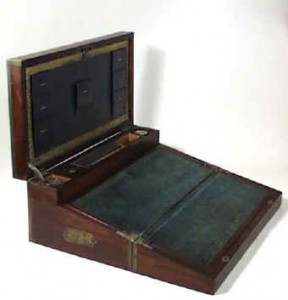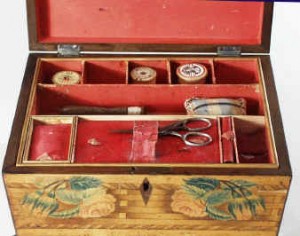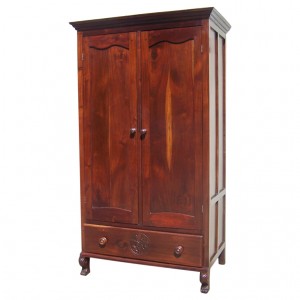Still swamped everywhere I look. Alas. So today you get an oldie but a Goodie about Lord Byron, a Certified Previously Published Post from January 2010.
What did people think of Byron
I’ve been meaning to post about this for a while. I’ve finally gotten my act together for our mutual enjoyment — I hope.
Lord Byron is, as most of you already know, frequently name-dropped in Regency-set historicals. Makes sense. Today we know Byron as a major literary figure. The really great thing about Byron is his reputation as the Bad Boy of the Regency. I have to confess, however, that Byron name dropping is becoming a pet peeve of mine.
Authors of Regency set historical romance often look for Regency-era poets and writers to mention in their books. The intent, of course, is to add background and depth to a story. The problem is that there is now a practically trite set of characters: Byron, Wordsworth, Coleridge, Keats and Shelly et ux. Southey comes in for mention on rare occasion. But I don’t often see other authors mentioned.
I’ve begun to feel as if I know exactly what the author was thinking — the hero or heroine is reading something. Poetry. Who would the h/h be reading? And the author, being a history nut, already knows these now famous poets, or perhaps Googles and comes up with this list. Byron gets picked a lot. It’s almost as if the man was the only poet of the Regency. I get why. He’s a fascinating, titillating character who also wrote poetry that will, some two hundred years later, make your breath catch.
I’d like to put forth the argument that writers could do a little better than the stock list. Not that we shouldn’t mention these poets. But I do believe it’s important to remember that every generational period contains a range of ages, from infant to elderly. We can look back from the comfort of our centuries in the future and say that the man who wrote the words She walks in beauty like the night was (as my mother would say) a beady-eyed genius.
In Byron’s own time, you can be assured, there were men (and women) of substance and influence who would have despised Byron for being new and different and young or morally corrupt, or who would have thought, correctly, early on in the poet’s career, that here was a young flash who had yet to prove his literary staying power.
Dad: Don’t talk to me about that new fangled poetry! New school indeed.
Son: It’s really good! Just read it!
Dad: That poser doesn’t hold a candle to Pope or Donne. And Milton! Milton! Now those are men who could write poetry! There were rules then and they followed them, by gad!
Son: (rolls eyes) That’s so eighteenth century.
Dad: (cups ear) What’s that? Eh? Why it’s a bell. And it’s tolling for thee. (Looks past son) Is that Satan I see coming for you?
Son: I’m going to Almack’s tonight. Don’t wait up.
Dad: Three AM and not a minute past, young man. (shakes finger) And you ask Miss Crackers to dance. She’s got fifty thousand a year.
For readers and authors today, Byron has become a stand in for real meaning. The very word Bryon has become recursive in that Byron refers to and defines itself. No explanation needed. With that self-referential symbol Bryon we no longer need to explain what we mean because the word alone conveys so much that is already understood. Bryon, Byronic. Bad Boy. Genius. Wicked. Fame. Scandal. Sublime. Sex. Untimely death. New. Racy.
Such symbols are handy and they can be used with enormous impact in writing so long as the author understand what comes with the choice. What happens too often, though, is a writer chooses Byron merely because the name is now a reference to a whole constellation of meaning and without due consideration of what comes with that choice.
The result is usually a reference the reader skips over because she already understands what’s packed into the symbol. The reader drops out of the story long enough to say, Oh, Byron, and then back. And yes, she picked up the meaning, but without the detail really great writing slips in. Richness of meaning is lost if that’s all that happens. When this happens, the story begins to feel like wallpaper.
The writer’s job is to find a way to introduce Byron and what we understand to be represented by Byron in a way that prevents the reader from skipping over the reference. It’s hard work and it’s also why it’s becoming even more important to know about other writers of the period. Don’t just stand on the shoulders of giants. (Thus concludes Carolyn’s Physics joke of the week.)
As a writer, don’t make the mistake of mentioning the major poets solely with the knowledge that we have today. Just because we call them the Romantics today does not mean they were called that then (they weren’t) or that everyone understood their genius or, conversely, that everyone misunderstood (but for your heroine). When you do that, you’re wallpapering your story and it will feel shallow.
By the way, if you carefully read the excerpt I’ve included, you will find an intriguing clue about how these poets were styled contemporaneously.
During my grad school days, I came across this book: Scribbleomania: or, The Printer’s Devil’s Polichronicon. A sublime poem By William Henry Ireland. I may have mentioned it in a previous post or two. It was published in 1815, so it’s contemporary to our period. Here’s the Google Books Link
I was looking for materials that addressed The Minerva Press, which this book does. Scribbleomania is full of names of contemporary and mostly forgotten (except to the PhD sorts) authors — good information for the historically minded, I dare say. There is also a nice section on Lord Byron, and I thought The Riskies sort of person would be interested to hear how at least one of Byron’s contemporaries thought of him and assessed his talent.
Scribbleomania is one long poem about (wait for it!) poetry and literature and the people who write it. I find that to be a rather delicious irony since Ireland’s poetry is pretty awful. Though in his defense, he was going for satire, sarcasm and humor. The footnotes are what make for fun reading. There’s quite a lot of interesting detail in those footnotes.
Before we get to Ireland’s section on Byron, a word or two about the author is in order. The book was actually published anonymously (for reasons I will shortly reveal) under the name Arthur Pendragon. Don’t think about that name for too long. . . Groaaaannnnn
Mr. Ireland was, alas, a man of poor judgment and character. His father was a noted collector of Shakespearean documents and young Mr. Ireland took it upon himself to forge some such documents and sell them to his father as the genuine Shakespearean article. The Wikipedia article about Ireland is fairly accurate if you want to know more.
Well, all right, a little additional set up here. Childe Harold’s Pilgrimage is the poem that brought Byron fame in his time, and it was published between 1812 and 1818. Not all at once, mind you.
Here we go, in the rhymes of William Henry Ireland:
Lord Byron
ac discas multa, et vites nescire doceri.
Cato. (Take heed to learn many things, and shun not the opportunity to reap instruction.)
Some strange combination must rule o’er the
spheres,
Since our age teems with many Parnassian peers.
A Byron, not lacking of fancy some store,
Who, study possessing, hath purg’d mental lore,
With Strangford respectably gracing my poem,
Whom last I recorded, of lordlings the proem.
This titled enditer, tho’ beauties possessing,
Childe Harold must needs with old phrase still be
dressing:
A style of composing shall ne’er claim my praises;
The Muses thus robing in masquerade phases.
For, as planets will oft seem halv’d, gibbous, or
These obsolete terms, to my mind, seem suborn’d
To torture our language, for ages corrected;
Which, now at its acme, must needs be neglected.
Having own’d that his lordship much fancy possesses,
May his flights henceforth throw off such harlequin
dresses.
As a bard thus I grant him the praises his due,
And, with care, bid him Pegasus’s journey pursue. (c)
(c) We are frequently told by the reviewers, that birth and fortune do not produce the smallest influence upon their decisions respecting any point connected with the republic of letters; which is, however, to my mind a very problematical assertion.
Notwithstanding due praise be allowed to Lord Byron, on the score of assiduous labour, scholastic acquirement, and classical elegance, he most assuredly cannot at present lay claim to real genius or originality; and, with deficiencies so palpable, the productions of his lordship could never have received those unqualified eulogiums, had not the talismanic charm of nobility infused its balsam as an ingredient into the dose of criticism. Considered in the light of a didactic writer, Lord Byron is deserving a considerable portion of praise; but any attempt to soar into the heaven of heavens, is a task beyond the powers of this Parnassian nobleman.
Some time has elapsed since the former part of this note was committed to paper: since which period a few short ebullitions have met the public eye, that do infinite credit to the muse of Lord Byron. I would, however, most seriously advise this nobleman to apply his abilities to some more sterling and lasting topic: let him obliterate from his thoughts all recollection of the new school. His judgment is obviously much matured; and the style he adopts is seldom characterized by a want of perspicuity: and, as the sublimity of Alpine scenery elevates the soul to the highest pitch of enthusiasm, even so will the mental energies expand in proportion to the grandeur of the subject which is selected to put them into action. Under such an impression, therefore, do I advise Lord Byron to lay the ground-work of a poem, the superstructure of which may justly entitle him to the praises of futurity.
Well. There you have it. Ireland does not seem to have cared much for Childe Harold but was, it would seem, sufficiently impressed by later words to think Byron could do better.
Here’s the intriguing clue: let him obliterate from his thoughts all recollection of the new school. From this I feel I can quite cleverly say that these young poets were styled by at least some as New School. I bet there were people ranting against the New School the way Joyce Kilmer had it in for Free Verse and the Imagistes.
I’ll leave you with this non-Bryonic tidbit from Scribbleomania because the spirit will be quite familiar:
On the subject of the Irish poet Mrs. Henry Tighe:
So many ladies have written, and still continue to produce trash, that no praise offered at the shrine of feminine excellence should be deemed fulsome; since the panegyric may prompt such unfortunate essayists to consult the productions of the personage so extolled, from whose style they may perhaps be prompted to correct their own effusions, or, if endowed with sense, to discriminate their natural inability, discard the pen, and thus relinquish all literary claims for ever. Independently of the poem of Cupid and Psyche, the lady now under Sir Noodle’s review produced numerous other short effusions, all of which are characterized by every requisite that could tend to adorn a female of the most refined taste and exquisite sensibility.
Ouch. Is that a backhanded compliment or what?
As with so many other female writers of the period, she’s been dismissed for centuries and her contributions forgotten.
About Mary Tighe who influenced Keats. More about Tighe. Pysche, by Mary Tighe. Here’s an 1812 edition of Psyche with other poems. Pysche was originally published in 1805.
Labels: Literature, Lord Byron, poetry
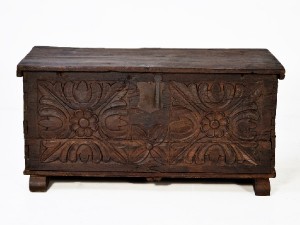 Or a portable writing box: (for a great story about Jane Austen’s almost-lost portable writing desk, go here…)
Or a portable writing box: (for a great story about Jane Austen’s almost-lost portable writing desk, go here…)

